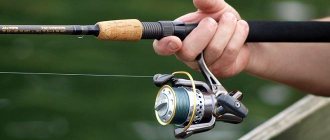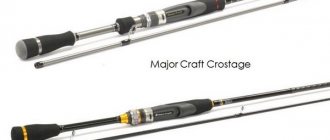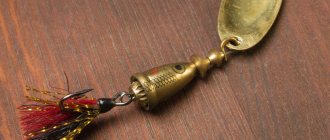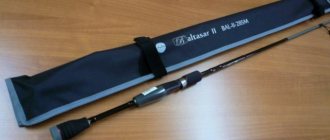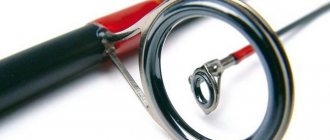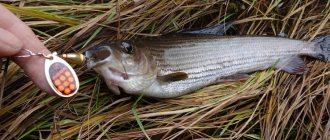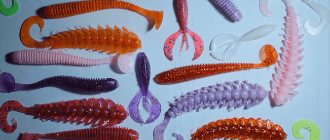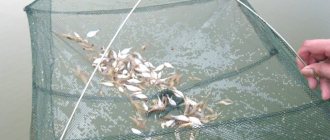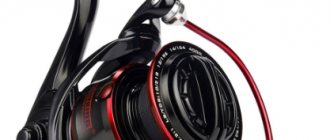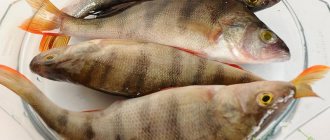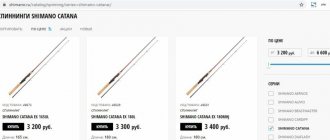The first question that anglers usually ask when choosing a spinning rod is: “What material is this spinning rod made of?” Then a whole series of questions arise...
The elasticity coefficient of the material certainly affects many of the characteristics of the spinning rod, but, by and large, this is not very important to buyers. Here you need to understand that there is simply no single standard and each company that produces spinning rods designates the elasticity characteristics of the material differently.
Some manufacturers of spinning rods write on forms “IM 9”, “IM 10”, and the same G. Loomis, for example, designates the material of their spinning rods as GL2, GL3, GLX or IMX. And how in these cases can we compare these characteristics declared by the manufacturers? No way! The main criterion for the modularity of a material is still its price. The higher the module, the lighter, more sensitive, louder the spinning rod, but correspondingly more expensive.
But there is another side to the coin. Such spinning rods require a more careful attitude, since the fragility of the forms increases and any, even the most harmless drop of the spinning rod on the stones, can easily lead to its breakage.
Spinning test
The test is the power of the spinning rod, but this concept is quite ambiguous. The test can be based on lures in grams or ounces, as well as permissible libres of braided line. The spinning rod can be of small test, but of great power and at the same time of any formation. We select the test in grams for the bait, taking into account its weight and the weight of the load combined.
Libras are also indicated on the forms of spinning rods, for example “8–15 lb”. It is recommended to use braid in this breaking range, and the manufacturer guarantees us that when using them and critical loads on the spinning rod, the braid itself will break faster than the spinning blank will be destroyed.
However, this may often not be true. So you shouldn’t religiously believe in these inscriptions. But still, novice spinning players have to adhere to these data, at least at the initial stage. At least it’s not a landmark, but it’s a landmark. If a spinning rod has a stated bait test of, for example, 5–25 g, then the optimal performance of the spinning rod will be approximately on a scale of 10–20 g, since it often happens that the bottom of the test is slightly underestimated, and the top is too high for a more “tasty” and wide digital range . It's the same with libras. If, for example, it is recommended to install braids from 8 to 15 lb, then, as a rule, it will be optimal to use braid with a breaking load of 10–14 lb.
Spinning rod structure
The action is the bending of the spinning rod under load. To put it simply and briefly, there are 3 types of spinning rod action: fast, slow and medium. A fast action is one in which only the tip of the spinning rod bends. This type of spinning rod is more convenient for precise casting, sharp hooking, and they are also more sensitive to bites. In jig fishing, the most common and respected option by many. Slow action is when the spinning rod bends entirely, right from the handle. The advantages are long casting and softer fishing, since the spinning rod smoothes out the jerks of strong fish, but control over the actions of the fish itself is weakened. I think that even beginners will guess that the middle tuning is between the two previously listed.
Spinning rod length
The size of the reservoir and strong current are the key factors in selecting the height of the rod. Regular shore jig on narrow rivers 10-20 meters wide requires the shortest forms of 1.8-2.1 m. In addition, they are very convenient when catching a predator from a boat, wade, from a dam or bridge. Large rivers and lakes dictate different requirements for jig spinning, which must deliver bait over a distance of 70-100 meters. To perform a fast power swing, you will need a rod 2.4-4.0 m long.
To learn more:
Catching chub in October with a spinning rod
Sticks for jig fishing with a height of 2.4-2.7 m are universal, which provide:
- possibility of short and long casts;
- high-quality wiring management;
- precise bite control;
- catchy hooking;
- Smooth fishing.
This is the kind of tackle that is optimal for a beginner and fishing in an unfamiliar body of water.
Spinning rod sensitivity
The sensitivity of a spinning rod is the ability of a spinning rod to transmit to you information about what is currently happening with your bait at the other end of the fishing line. For example, to distinguish touching the bottom from a bite or to understand that the bait “crosses” over a snag, as well as to determine the structure of the bottom. Sensitivity depends on many components. Here the material used to build the form, the structure itself, the test, the quality of the rings, their weight and placement, and even the reel used, everything plays a role here.
But the most important thing is the weight of the spinning rod. The smaller it is, the better the sensitivity. Now from the general to the more specific. Let's choose a spinning rod for catching pike perch. It seems that the task is simple at first glance, but some nuances make us think twice before buying this or that spinning rod. First of all, you need to clearly understand what conditions most fishing trips will take place in the future.
If you plan to fish on a river where the current is quite fast or moderate, and the bottom in such places is usually hard (sand, gravel), then the power of the spinning rod and its sensory abilities come to the fore. Spinning rods suitable for these purposes generally have a fast action, and sometimes ultrafast action. Often with such spinning rods it is quite difficult to visually track (by the tip of the whip) the step of the jig, especially in the lower 1/2 of the test range, especially if the fishing conditions leave much to be desired (side wind, big wave, etc.).
Having experience in this kind of fishing, I always take spinning rods with the expectation that I will have to fish with masses of bait, mainly 1/2 of the top declared test, which is indicated on the form of the spinning rod. This type of spinning rod is usually called “prickly”, “rapier”, and “evil” among spinners. We will conditionally call it a “non-tip” type of blank due to the weak return of the tip of the spinning rod when placing jig baits. If these are ponds, lakes, quarries, low-flow rivers, oxbow lakes, bays, reservoirs, where in most cases the bottom is heavily silted, then in such places it is more convenient to fish with whips that have a “live” tip of the spinning rod, since it is easier to track the jig step along it . Such spinning rods have the so-called. "nodding" system.
In these conditions, they are more preferable in any case, since the sensory component of the step is eaten up by the soft bottom soil, and it is much easier to track it visually, by the live tip of the spinning rod, and not by the tactile-sensory component in the hand, as I usually do on currents less end and evil spinning rods. This in no way means that the sensory of such spinning rods is worse - no, it is the same, and sometimes even better, than that of the “evil”, “rapier” rods, where the return with the end of the spinning rod is less noticeable visually when the jig touches the bottom .
It’s just that the approach and concept of constructing this spinning form are different. There is no point in finding out and arguing about what is better and what is worse, it is simply stupid, since we are all different and sometimes we have directly opposite views on the same things.
Both spinning rods are needed, they are in full demand for their fishing conditions. I am very glad that now on our market there is a huge selection of spinning rods that will satisfy the needs of any, even the most demanding spinning player. Here you just need to decide which type of form construction is closer and more convenient to you personally.
Based on the experience of communicating with colleagues, I will say this: end-action spinning rods (nodding rods) are more suitable for beginners, since with them it is easier to learn and master the basics of jig fishing. Spinning anglers, who have been fishing for more than one year, still gravitate towards spinning rods that are more “prickly”, “rapier-like”, “angry”, as they allow for much more varied placement of various baits.
This type of spinning rod, as a rule, also has a stronger restraining resource on the blank; they not only have a very powerful and hard butt, but also the middle part of the spinning rod, which bends only under a fairly strong impact on the blank. During forced fishing, such spinning rods do not bend to the very handle and do not turn off on large fish (“switching off” occurs when the upper 2/3 of the blank is straightened, as it were, in line with the fishing line).
Rigid spinning rods allow you to more clearly control the process of landing quite worthy, and sometimes trophy, specimens. It is this factor that is one of the most important for experienced spinning players, why they choose this system. Although these spinning rods have their drawbacks. This system of spinning rods does not throw the bait itself.
Here it must be dispersed with a biting and sharp cast, comparable to the click (clap) of a whip, which requires not only a more forceful approach to casting, but also professional skills to avoid shooting baits. Well, one more drawback, which we have already talked about, is that it is difficult to control the step under certain conditions. From the above we can conclude that any type of spinning rod has both its pros and cons. Accordingly, when choosing a spinning rod for your fishing conditions, you need to know and take this into account, understanding that today there is no universal spinning rod that would be equally suitable for all types of spinning fishing.
But professionals in the field of “spinning rod construction” do not stand still, offering new developments, changing the very approach to modern gear. So, recently there has been a tendency towards the fact that spinning rods have increasingly begun to appear, which have the advantages of both types of spinning rods that I listed above, and at the same time their disadvantages are minimized.
Their whip itself, for example, already has the “ultrafast” action type, which is characterized by a pronounced bend of only 1/6 of the upper part of the blank. Here we got only the very top part of the “nod” type of spinning rods. But the powerful middle part and the butt itself are from the second type of blank.
Putting this together, we get the following: the live tip provides optimal control of the bait when using various types of retrieves and its excellent visual control in any fishing conditions. This is an undeniable advantage. And also, due to the large rigid section of the blank, it becomes possible to reliably hook, hold and remove fish in the most difficult situations without losing control over it.
Considering that today such spinning rods are made from high-modulus materials, in addition to everything we get excellent tactile sensitivity in the hand due to the excellent sensory capabilities of these forms. Now let’s go through the specific models of spinning rods that are in my arsenal today. Perhaps this will help some of you decide on choosing a particular spinning rod for your tasks and conditions. And I will try to openly and honestly talk about all the pros and cons of the spinning rods that fell into my hands.
FLAMINGO PRINCE
The spinning rod belongs to the “nod type” of whips. Length 255 cm, declared spinning test 3–15 g. Suitable cords range from 6 to 12 liters of tensile strength. In fact, the test of the FLAMINGO PRINCE spinning rod is slightly underestimated, both lower and upper. The real working range of this spinning rod is 7–25 gr. The stated test of 3 g is simply far-fetched, and the FLAMINGO PRINCE spinning rod begins to work decently only from the above test.
Over the past ten years, I have never picked up a more versatile spinning rod than this one, and I have become attached to it with all my heart. It is excellent for fishing with wobblers, whether it is night fishing for pike perch or daytime chub fishing, as well as for catching pike with oscillating and rotating spoons.
If necessary, you can easily reach the asp with a castmaster - everywhere it is good, understandable and in demand in a very wide range of applications. But it is best suited for jig fishing. The transmission sensor of the spinning rod is at the highest level, it transmits the bite of even a perch at 100 grams from a long distance, not to mention the bites of pike, pike perch, asp, and chub.
In the hand you can clearly hear the jig step from 10 gr. I have caught more than one season with this spinning rod, but I never cease to amaze how the manufacturer was able to make such a unique spinning rod for such a popular price tag, put fittings on it from the world brand Fuji and pack it all into a functional, beautiful, branded hard tube.
In a word, there is a lot to learn from more expensive brands, where spinning rods cost 500–700 USD. e. it is sold completely naked, in a simple fabric case or even in cellophane. But I want to note that this spinning rod is the only one in the entire series that is so unique, and sometimes it seems to me that the Chinese developers got such a good spinning rod by accident.
So now this is a fly in the ointment. The series consists of four sticks. Two of them are 285 cm long with tests of 3–15 and 5–25 g. They are heavy, frankly deaf in terms of sensory, I rated their casting as no more than three points out of five, and this is despite their length! In terms of the totality of all their qualities, they frankly disappointed me. So the purchase of these spinning rods is extremely undesirable.
I also do not recommend taking a spinning rod 255 cm long with a dough of 5–25 g. Although it is significantly better than the two listed above, the sensory sensitivity is still far short of the 3-15 g test at the same length.
I will also take the liberty of saying that, in my opinion, the placement of the rings on it was done incorrectly, or the form was not finalized, and in practice this sometimes leads to the breakdown of the spinning rod when fishing or casting baits that are close in weight to the top test, but not exceeding it. These cases are far from isolated. Only my friends had at least three broken ones.
Shore jig stick test
A bait that is too heavy, combined with a weak blank and a strong cast, is the main cause of serious equipment failure. And vice versa, a powerful rod equipped with a light spinner of several grams will not allow you to feel it normally during retrieving and quickly respond to bites from a predator. To avoid this, it is necessary to take into account the factory test of the spinning rod for jig, which indicates both permissible weight limits for the bait. Based on this principle, it is customary to distinguish the following classes of fishing rods:
- ultra-light (Ultra-Light, UL) – 0-5 g;
- light (Light, L) – 3-15 g;
- medium-light (Medium-Light, ML) – 5-20 g;
- medium (Medium, M) – 7-30 g;
- medium-heavy (MH) – 10-45 g.
To learn more:
Differences between a split shot and a drop shot
Heavy tackle (Heavy, H) with a test weight of 20-80 g is also used, which is the longest-range among jig spinning rods.

Ultralight and lightweight classes work optimally for perch. For pike, medium-light or medium tackle with a test weight of 10-30 g is suitable. When fishing for pike perch, it is better to use medium and medium-heavy rods with a test weight of 10-50 g.

BANAX BLADE BLS83MLF2
Spinning rod length BANAX BLADE BLS83MLF2 252 cm, test 5–18 g. I took this spinning rod because of the rigidity of the blank specifically for catching pike perch. Also captivating was its high-modulus graphite, which offers fairly good sensors. The manufacturer classifies this series of spinning rods as an elite class, stating that Japanese-made highly modular graphite is used in the manufacture of the blanks. The result is very light, fast, ultra-sensitive spinning rods that are ideal for bringing to life the latest animation techniques.
At the same time, spinning rods are endowed with excellent throwing qualities, they are very elastic and reliable, and cope well with heavy loads when fishing for a trophy. I have a lot of spinning rods in this test range and therefore I wanted to compare the old models with the new ones. “Cheburashka” 6 grams plus a twister three inches from “Yum” on a 10 lb. fence in a calm - the step is clearly traced at the tip of the spinning rod, and at 8 grams on the same equipment the wiring can already be felt in the hand. With a load of 10 grams, it is possible to jig at night without any “fireflies” on the tip of the spinning rod.
Then my favorites were taken one by one: Flamingo Prince up to 15 g, Lamiglas Certified Pro X86MTS with dough up to 17.5 g. They do not have the rigidity of a blank like the Blade, and accordingly, they do worse in terms of percentage of bites from long distances. When testing the Banax Blade, I was lucky enough to test its reliability on a decent fish, holding a small catfish (4–5 kg) for a few minutes, and a little later taking a zander weighing 3.5 kg. Of course, having 25 years of experience in spinning practice, when catching such fish, I do not allow critical angles of attack on the spinning rod during the fishing process.
We especially shouldn’t forget about this in the final phase, i.e. in the coastal zone (or near the boat), when the fish is ready for the last power throw. In general, what I liked about the Blade was the sensitivity of the spinning rod on the step, as well as the phenomenal bite transmission. The spinning rod is very hard for its stated test, and therefore notching from the ejection is its strong point. The tip of the spinning rod is quite lively and therefore it can safely be classified as a “nod” type stick. This system helps many people visually control the wiring process in rather difficult fishing conditions.
The spinning rods of this series are, of course, very interesting, but in order to be correct in front of colleagues in the hobby, we have to fully admit that the “Blade” series itself is still somewhat “damp” and it is better to hold off on purchasing them for now, since, for example, in the event of a breakdown of one from the knees (I had to deal with this when casting within the boundaries of the specified test), the examination, the subsequent ordering of the required part of the form from the manufacturer and the wait for receipt, easily stretches out for several long months, even in situations where the case is recognized as a warranty.
LAMIGLAS CERTIFIED PRO X86MTS and X83MTS
The CERTIFIED PRO spinning rod belongs to the “nod” type of whips. The test declared by the manufacturer is 7–17.5 g. Practice has shown that the working test of these sticks is 8–25 grams without any worries, and the braids used have a tensile strength of 8 to 15 grams, which allows you to adequately fight with trophy specimens. The Certified Pro spinning rod series itself has been produced for a very long time, more than ten years, and therefore is well known and loved by many of our spinning rods. Spinning rod blanks have a unique feature: the design of the whip is called Magnum Taper (in the articles it is indicated as MT).
There are several explanations for this name, in particular, this is the name of the shape of a “large-volume vessel with a thin neck.” We have adopted a more commonly used term - “bottleneck”. The task in constructing such forms was posed as follows: to create an ideal spinning rod for fishing with compact baits, such as oscillating spoons, and to make it possible to carry out decent and accurate casting, guiding with the current, across or against it. The spinning rod required complete control over the bait during all these manipulations, which, you see, is not easy, as well as reliable hooking and landing of fish with good and timely testing of the spinning rod in jerks.
Let us at least remember what a pike is capable of near a boat or shore, its somersaults, candles, jerks. The manufacturer will not reveal to us all the subtleties of the structure of this whip, but we don’t need it. Only one thing can be said for sure: the series was a great success, and it fulfills its tasks perfectly. In addition, it quickly became clear that such spinning rods (Magnum Taper), made of high-modulus material, are perfectly suited for fishing with jig baits in our Russian way (and it differs significantly from the American one), which was appreciated by Russian spinning anglers.
Thanks to this series, a considerable army of fans of this brand as a whole has appeared. The most popular and popular models are the X10MTS, X86MTS and X83MTS, both for fishing from a boat and from the shore. At the moment, having caught enough of the Lamiglas X86MTS, I can confidently say about it as an excellent universal stick, which is in demand not only for fishing with jig baits, but is also excellent for catching fish such as pike, asp and zander.
The whip also works well with medium-sized spinners. How many warm memories he left while catching large chub in the riffles with wobblers! And with sunset, without even changing the place of fishing or the tackle itself (but only the type of wobblers), I was already ready to catch night pike perch. It is perfect for this task as well. You don’t have to worry and be sure that the spinning rod will not let you down. When fishing for fish, the spinning rod works in such a way that the spinners say “sticks the fish,” that is, it does not give it a chance to escape.
Also, these spinning rods have proven themselves to be excellent jigging rods with a pronounced “nodding” action, without compromising the sensory component in the hand. This series is most in demand in still water or in shallow currents (reservoirs, lakes, quarries, etc.), where fishing conditions are far from ideal (wind, muddy bottom), and in such places the step requires tighter control. This is where the “nod” of the tip of the spinning rod and visual control are simply irreplaceable.
Today, fishermen, in pursuit of newfangled trends, are trying to take something new, and in their opinion, the best, and therefore put these spinning rods up for sale at half the price. For beginners, this is a good chance to buy an excellent spinning rod at minimal cost, giving the spinning rod a second life, and at the same time give yourself a lot of fishing trips with excellent equipment, the characteristics of which are not inferior to leading brands with much higher prices.
TOP spinning rods for jigging
When choosing a spinning rod for jigging, fishermen's reviews, of course, are of no small importance. But you can also familiarize yourself with the rating below. It includes the best rods that can be used from the shore, boat or both at the same time. This list shows better models in terms of price/quality ratio and important characteristics.
Norstream Kando 902MH

As usual, Norstream presents the best rods in any class. And for shore jig, it is best to choose Kando 902MH. This is a very long-range fishing rod, it has maximum sensitivity, and you can use it to tie fish well. Spinning provides high-quality movement of the bait, so the predator immediately notices it, and then cannot get off the hook.
You may be interested in: Spinning for pike
The length of the rod is 2.74 m, which allows it to be classified as a coastal one. The weight of the dough is about 12-38 g, sometimes you can use a larger weight. The system used is fast. Thus, this is the best option for a shore jig, since all its characteristics correspond to the recommended ones, and the price is quite reasonable.
Major Craft Rizer 832MH
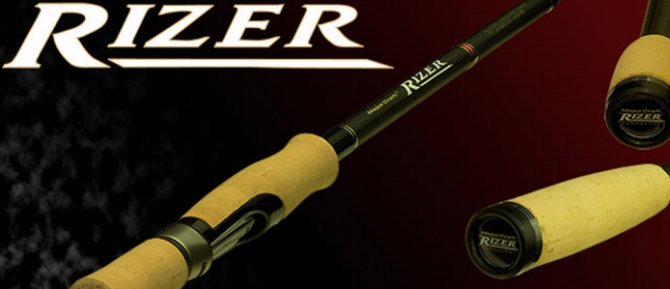
This rod is rightfully the most sensitive of this list. Of course, its casting range is slightly less than that of the first position in the rating, but the fisherman will have a better feel for how the fish catches the bait. In addition, with this fishing rod the fish is cut and reliably tied. Thus, this is no less successful fishing rod than the previous one.
The length of the rod is 2.52 m, and the weight is 8-35 g. A fast action is also used here. The weight of the bait may be slightly greater than indicated in the test, which means that the fishing rod can be used on any body of water.
Banax Thunder 90MXF2
This model is considered the most successful jig spinning rod at a low cost. Although the fishing rod has been produced for a very long time and is considered outdated, it has been tested by time and attracts more and more anglers to take up jig fishing. This spinning rod has good sensitivity, range, and excellent fishing behavior. Of course, the rod itself is flimsy, but this does not greatly affect the quality of fishing.
The length of the Banax Thunder rod is 2.74 m, which allows it to be classified as a coastal spinning rod. The recommended test is 7-25 g, but users consider these figures to be too low, since the fishing rod can easily withstand 50 g. The action here is set to medium-fast, but the fishing rod can also be equipped with an ultra-fast action.
Pontoon21 Psychogun 912MMHSF
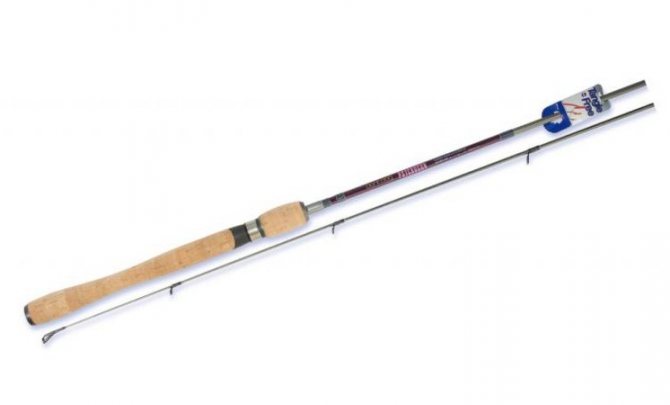
Many fishermen believe that this model is the best for jig fishing. Of course, this spinning rod has a slightly weaker range than the others, but it has maximum power. The rod is ideal for fishing in difficult conditions, when the fastest possible retrieval is required, for example, when fishing in snags.
The length of Pontoon21 is 2.74 m, and the test ranges from 10.5 to 32 g. As for the action, the manufacturers promise that they use a fast and very sensitive action. In fact, this is confirmed, since the fishing rod is well mobile, and its end produces very informative movements. This model is also called Deep Reaction, which means that it definitely belongs to spinning rods for jig fishing.
Daiko Ultimatum 962HMF
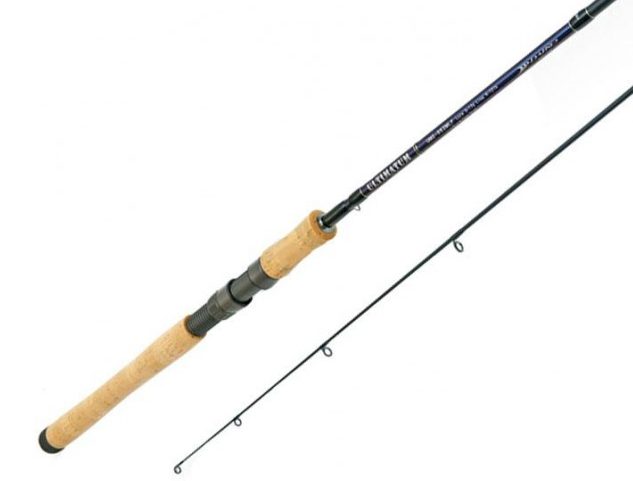
This rod allows you to use very heavy baits and is classified as a coastal spinning rod. It has the maximum bait casting range. Thus, it is easy for a fisherman to deliver bait over a distance of about 100 m. And if you install a very thin cord and a spinning reel, you can throw it over a hundred. Moreover, the fishing rod is made in such a way that even at such a long distance you can clearly see the bite.
You may be interested in: Spinning ultralight
The fishing rod has a length of 2.89 m. And the test is over 12 and up to 60 g. The manufacturer claims a medium-fast action.
Norstream Spiker 782MH

This model is considered a universal spinning rod for jigging, which has a budget price. The length of the rod is 2.32 m, and the test weight is 10-35 g. Thanks to these characteristics, the rod can be used both on the shore and in a boat. The spinning rod is also characterized by sufficient sensitivity, which is enough to sense minimal bites. In special cases, you can force fishing in difficult places.
Banax TinFish 80MF2
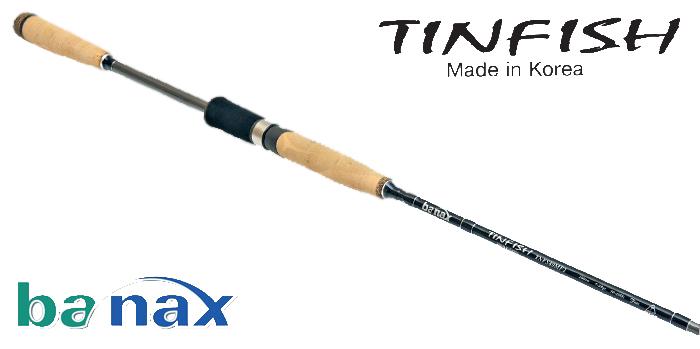
This is another versatile rod that has a long casting range and excellent sensitivity, so the fisherman feels great when fishing from the shore. As for fishing in a boat, it is ensured by a comfortable handle, minimal weight of the rod, and a length of only 2.44 m. A varied test can also be used here - 7-28 g. Sometimes you can install a heavier load. This rod is considered an ideal choice for beginners who need a universal spinning rod for jigging.
Major Craft Rizer 702H
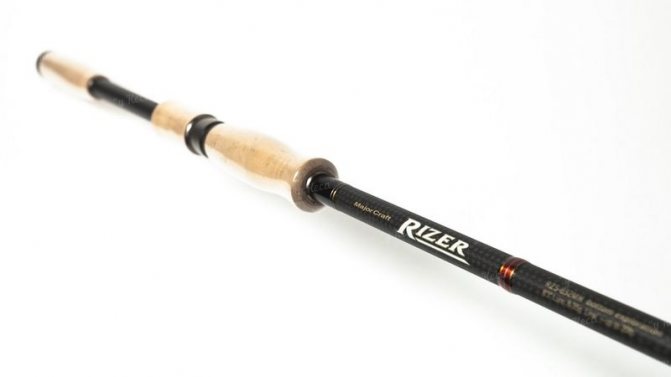
If you are looking for the perfect spinning rod for boat fishing, this model is worth considering. Yes, there are very few boat fishing rods, but among them there are worthy specimens. The length of the model is 2.13 m, and the test ranges from 10 to 42 g. It uses an ultra-fast action. A characteristic feature is the ability to use large wobblers for twitching.
Norstream Partner 70H

This is another high-quality boat spinning rod. It has a thick butt, and the rings are reinforced to ensure reliable forced playing. The rod length is only 2.13 meters, the action is super fast, and the test is 15-45 g.
GAD Harrier 702MHF
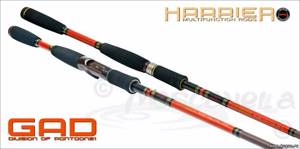
This is another great cheap spinning rod that can be used for boat fishing. It has good reliability and durability, so you can rest assured that you will be able to pull pike perch out of difficult places without any problems. The product is made with high quality, the design is thought out, and the cost is minimal.
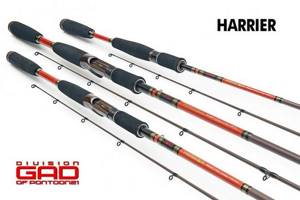
The length of the rod is 2.13 m. The rod has a fast action, the butt part is reinforced, and there is a movable tip. A spaced neoprene handle is used. Rod test - 12-45 g.
To enjoy jig fishing, you need to choose a reliable and high-quality fishing rod and other gear. With its help, you can provide the necessary wiring, notice a bite in time and cut through the fish’s mouth. Therefore, you should pay a lot of attention to the choice of such a product and take into account the recommendations of the above rating.
